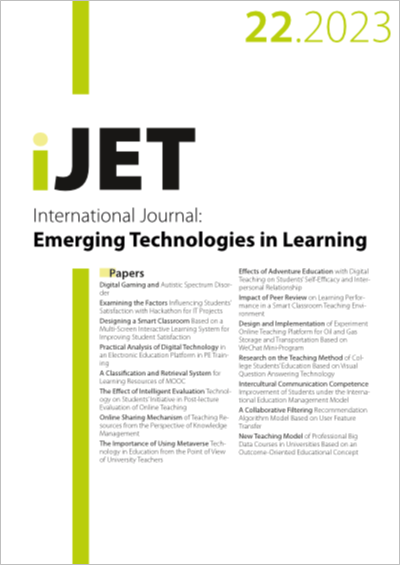Designing a Smart Classroom Based on a Multi-Screen Interactive Learning System for Improving Student Satisfaction
DOI:
https://doi.org/10.3991/ijet.v18i22.39959Keywords:
smart classroom, multi-screen learning environment, student satisfaction, M-learningAbstract
There are several issues with traditional classroom teaching, including the sporadic presentation of lecture materials, the reliance on a single, traditional teaching method, and a lack of student engagement and initiative. These problems seriously impact the quality of engineering education. Combining the advantages of mobile learning and multi-screen displays, this paper proposes a smart classroom architecture based on a multi-screen interactive learning system (MSILS). The proposed smart classroom system supports students in conducting learning activities in a multi-screen learning environment. Its goal is to enhance interaction and increase student satisfaction in engineering classroom learning. For the evaluation, an experiment was conducted in a science and engineering-related course at a university in China. The research results show that students who received instruction with the proposed system reported higher satisfaction in four areas: information technology, teaching methods, perceived value, and learning satisfaction. Approximately 90% of the 629 undergraduate students who participated in the experiment expressed their desire to continue their studies in this smart classroom. This indicates that students are more interested, expectant, helpful, and engaged in the target courses they are taking after using the smart classroom system.
Downloads
Published
How to Cite
Issue
Section
License
Copyright (c) 2023 Zhicheng Dai, Fuming Zhu, Liang Zhao, Junxia Xiong, Xiaoliang Zhu

This work is licensed under a Creative Commons Attribution 4.0 International License.



